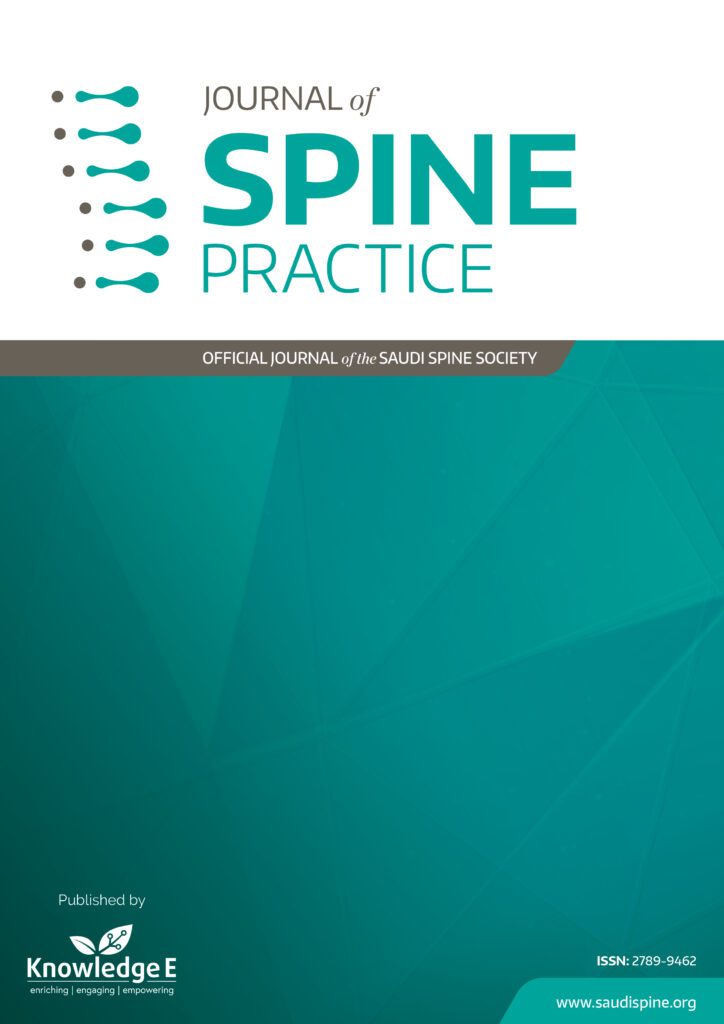
Journal of Spine Practice
ISSN: 2789-9462
Leading research in all spine subspecialties focusing on orthopaedic spine, neurosurgery, radiology, and pain management.
Nontraumatic Atlantoaxial Rotatory Subluxation: A Rare Complication of COVID-19 in Elderly Patient
Published date: Nov 07 2021
Journal Title: Journal of Spine Practice
Issue title: Journal of Spine Practice (JSP): Volume 1, Issue 1
Pages: 35 - 36
Authors:
Abstract:
Introduction: Nontraumatic Atlantoaxial Rotatory Subluxation (NAAS) or Atlantoaxial Rotatory Subluxation (AARS) without trauma or concomitant bone pathology was first described by Sir Charles Bell in 1830 in a patient with syphilis and pharyngitis, who developed lethal outcome due to spinal compression. The syndrome was named after Grisel who described two cases of pharyngitis and atlantoaxial subluxation in 1951. However, this is an uncommon condition of uncertain etiology characterized by NAAS, usually seen in children secondary to an infection and inflammation in the head and neck region or otolaryngeal procedures. Patients generally complain about neck stiffness and pain, and sometimes dysphagia may occur. Diagnosis is established based on the clinical and radiological findings. The etiopathogenesis and the underlying pathomechanics have not been clearly explained. A hematogenous spread of infection from the posterior pharynx to the cervical spine, according to the recent literature, with hyperemia and abnormal relaxation of the atlantoaxial ligaments is a widely accepted theory. The vascular plexus providing the drainage of poster superior pharyngeal area is responsible. The periodontoid plexus is connected with posterior nasopharyngeal veins via the pharyngovertebral vein. Any infective embolism may spread from superior pharyngeal area to upper cervical joints due to this plexus which does not have any lymph node, thus providing an anatomical explanation for the atlantoaxial hyperemia reported in Grisel's syndrome; however, the clinical picture and complications of COVID-19 are unclear until now and every day new symptoms and findings are reported as early and late complications.
Methodology: An 86-year-old male presented to our clinic in KKT, Jeddah from Yanbu (which is 330 km away) with a complaint of neck stiffness in anterior-lateral position after recovery from COVID-19 six months back. The patient was treated at home without admission in hospital. He had no history of trauma. During the physical examination, the patient's neck was stiff, and there was neck pain with palpation and left-sided torticollis. The patient’s weight was 58 kg, height 160 cm, blood pressure 140/75 mmHg with a pulse rate of 72, SPO2 95, and BMI 22.7. There was no sign of fever or any type of inflammation in his body. The patient had previously consulted neurosurgeons at three different hospitals in Jeddah and was advised a medication with a cervical collar for a clinical follow-up. After three weeks of follow-up, they advised him to start physiotherapy for one month with no benefits seen in clinical finding, the patient then came to us. Direct radiogram of the cervical region showed suspicious findings at the atlantoaxial joint. Anterior view of the cervical radiography revealed tilted position of the head over neck, while the lateral view showed no thickening of the parapharyngeal soft tissue. The distance between the axis and dens was within normal values for his age (ADI = 3–4 mm). This confirms our diagnosis of type 1 atlantoaxial subluxation according to Fielding and Hawkins classification.
Result: Based on the patient’s history and physical examination, there was no infection or neck operation causing an inflammation in the neck except the COVID-19 six months prior to the neck stiffness. With this case, we would like to highlight that atlantoaxial subluxation should be kept in mind when neck stiffness is seen in elderly patient without history of trauma but with a history of COVID-19 as a rare complication.
Conclusion: NAAS is a rare but major complication that can often go unnoticed in its early and late phase, which can be a major cause of morbidity following COVID-19 infections, thus early recognition and diagnosis is mandatory especially in adult and elderly patients recovering form COVID-19.
References: